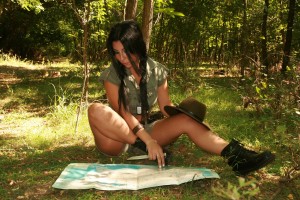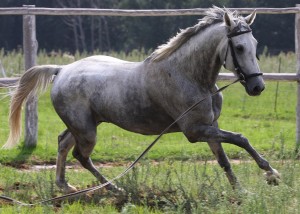
The first thing about mapping a course is understanding that it can have many different outcomes, so you need to know where your destination is. In planning, you need what we call a “vision”. So craft a vision statement for your life. Think about who you are, what you stand for, and what you want to be known for.
Major Objectives, Goals and Tasks
From there, you need to think about a few major objectives in your life; those will be the big, key steps you need make to lift you to your vision. If you want to be a loving person, who helps others, and makes the world a safer place for people to ride bicycles, than what are a few of the big steps that will get you to be this person. What are some of the general themes in your life? These are objectives you want to accomplish, they should steer you.
Each objective needs goals. The goals can be compared to splits in the trail. They become the place where you decide if you are going to move to the next level. There is an old saying that you should make your goals specific, timely, and measurable. Here is the thing about goals, and we could go on about this topic for months, but it is better to have them and not quite achieve them (but get close), than not have them at all. So don’t beat yourself up if you don’t make your goal, just keep moving in that direction. Less Brown once said “The problem in the world is not that people set huge goals and fail, it is that they set small goals and succeed.” I love that!
Finally each goal needs tasks. That’s what life is, tasks. These are flexible and dynamic, but need to get done. So, the tasks are your to-do list. Many times this list is in our head, and that can be a mistake. It is harder to prioritize when the list is in your head. Have you ever procrastinated? That is because you don’t have your list laid out. When a deadline comes, whether it be taking out the garbage as the truck is pulling up to the curb, or getting a document out by the boss’s deadline, it mandates a priority. People who procrastinate don’t mandate their own priorities so they are constantly reacting. It can work for some people but it is hard to chart your own course.
Figure out your tasks. When I have people work together with this sort of planning, one could literally blindfold the other and give them the tasks to go from point A to point B on stage. That is the power of laying out your tasks and having a step by step process.
Join Me in the Wilderness!
I hope this helps you understand how to map your way through the wilderness of life. These are all concepts that I learned working in strategic planning for institutions and natural resources. I have crafted a system that I use for personal strategic planning. I would be glad to share it with you in more detail. Perhaps you and your friends want to visit me in Northern Wisconsin where we could all take a walk in the woods and lay out a map for your journey through the wilderness. Just let me know. I will be waiting under the third tree from the fork in the trail.
Happy mapping,
Rad

It has taken me a long time to get to the intermediate level of horsemanship; about 14 years. During that time I have read a lot about horses and horse training. I have watched a lot of videos. I have owned 10 different horses (I know that is ridiculous), and I have even done some training with other people’s horses. I still have a lot to learn, a ton! I know that there is way more for me to learn than I know. I am not even halfway there. I haven’t even scratched the surface. I have, however, learned a great deal.
Greatest Teachers
Horses themselves have been my greatest teachers. These magnificent animals are very honest and true. Once you learn how to read them, they share a language and it is earnest and pure. They don’t always tell you what you want to hear, but they don’t try and deceive you by hiding their feelings.
Horses operate in their own world, with their own rules, much like any other species I have studied closely, and each, having their own secrets to share with us. I have been open to learning about their world, right from the horse’s mouth if you will. I think I have done well with horses in part because of my background in ecology and conservation and the fact that I approach horses much as I approach wildlife species. I understand that it is not all about me, about us, but rather often about the horse and what they need.
Leadership Skills
Spending time with horses has actually been a great way to study leadership. Through watching these powerful animals and getting them to trust me enough to allow me to ride them, I have learned a lot about what a leader is and how to summon up leadership ability that may initially seem impossible to manifest. There are some really great lessons to be learned about being a leader from working with horses. I would make a case for those lessons being somewhat essential to people who hope to, or even already do, hold the prestigious title of Leader.
In the horse world you often hear things like, “To be a good horseman, your horse needs to understand that you are dominant.” You hear that the ultimate goal is control at every second. You hear that you must make the horse respect you. Is this true?
There are parts that are true, but I think many equestrians take this too far and lose the ability to truly bond with a horse. Others don’t believe it enough and soon find out that they are not yet worthy of leading a horse. It seems to me many leaders in human life are wrestling with the same challenges. Whether it be in an office, on a job site, in a warehouse, or even at home parenting, I think many out there are too focused on dominating, controlling, and demanding respect. Others have no idea how to earn this respect.
Lessons Learned
Although many of the equestrian teachers I follow will argue that what we want with our horses is control, I think that is only true to a point. I do want to decide what direction we go, the gate we travel in, and even the speed, more or less. But I don’t want to control the horse’s every move. If I did want total control, I would ride a bicycle instead of a horse. I get on the horse and give it a job. I don’t micromanage this job, but rather ride until the next big decision needs to be made. I don’t sit up there and say step, step, step, step. I just say “let’s go over there” and let the horse do its thing. I may steer around this object or that, but I trust the horse to do its job much of the time.
Leaders have to learn this lesson. When you are working with someone in a leadership position, it is very important not to micromanage. For one thing, it drives people crazy. For another thing, it is a poor use of your time. When putting together a good team or even just having one employee, one needs to realize that they have their own strengths, their own style of doing things. It is important to direct the task, but not direct every step of the way.
This is just one of the many ways horses can teach us about leadership. There is nothing like actually working with a horse to humble you and make you realize how much there is to learn. At the same time there is nothing like working with a horse to invigorate you and make you see your full leadership potential. When you are the one giving assignments to a thousand pound animal and it is actually looking to you for direction, things get real, fast. It is inspiring to find out that you can rise to this occasion, and if done right, build a relationship where you are seen by the horse as both gentle and caring, but also powerful and worthy of the greatest amount of authority. They would literally trust you with their lives. I know I have implemented the lessons learned from horses in my life, in the leadership positions I’ve had. So… maybe I have not been wasting my time horsing around.
All the best,
Rad
Rad Watkins and the Animal Leadership LLC team are always learning what we can from the animal kingdom and applying it to our own lives. Learning lessons from the wild can help you unlock a better version of yourself. Browse our main website to learn more about the writings and motivational seminars developed by Rad Watkins.
]]>